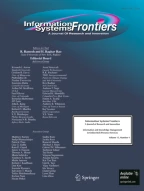Abstract
The paper introduces the basic problems of investment in new technologies in an operator telecommunication network. Investment in technologies for delivering broadband services at the metropolitan and backbone levels from technical and economic point of view are evaluated and assessed. In particular, the paper deals with an empirical study and a techno-economic analysis of two key broadband technologies used for upgrading metropolitan and backbone networks: SDH and WDM. The study is based on two basic measures, i.e., CAPEX and OPEX, while the financial assessment of the overall technology deployment uses two economic evaluation measures, i.e., Net Present Value and the Internal Rate of Return. The study is focused on the network of Telekom Slovenije, the incumbent operator in Slovenia. The data used in the study was supplied by the operator. The study showed that in long-term WDM appears to be a more economic solution than the SDH technology. The study pointed out also that any techno-economic evaluation in the area of telecommunication network backbone upgrading should be always based on calculation of several indexes as none of the known indexes taken individually is capable to provide complete picture of the required investment cost and the benefits arising from the used solution.
Similar content being viewed by others
Notes
COM(2004) 369: “Connecting Europe at High Speed: National Broadband Strategies”
Capital expenditures (CAPEX) are funds used by a company to acquire or upgrade physical assets such as property, industrial buildings or equipment. Operational expenditures (OPEX) are the on-going costs for running a product or business.
References
Andreas, J. (2003). SURPASS, A new generation of networking, ISN Carrier Networks. Siemens, p. 32.
Bishop, D. J., Giles, C. R., & Austin, G. P. (2002). The Lucent lambda router: MEMS technology of the future here today. IEEE Community Magazine, 75–79.
BREAD Project, http://www.ist-bread.org/, 1.3.2006.
BReATH Project, http://www.ist-breath.net, 20.3.2007.
Brigham, L., Smith, J., & Bruce, N. (1992, Spring). Native radio broadcasting in USA and Canada. Journal of Broadcasting & Electronic Media, 183–194.
Caballero, M. J. (2005). Migration to next generation SDH pp. 182–191. Barcelona: Printulibro, Intergroup.
Chu, P. B., Lee, S. S., & Park, S. (2002). MEMS: The path to large optical cross-connects. IEEE Community Magazine, 80–87.
Courcoubetis, C., & Richard, W. (2003). Pricing communication networks, economics, technology and modelling p. 347. West Sussex: Wiley.
E-Communications Household Survey Report, EC, DG INSO, http://europa.eu.int/information_society/policy/ecomm/tomorrow/roadmap/index_en.htm July 2006, 29.8.2006.
Ken-ichi, S. (2004). Key enabling technologies for future networks. Optics and Photonics News, 15, 34–39.
Lacey, L., (2004). Optical cross-connect and add/drop multiplexers: Technologies and applications (Tutorial), WT1, OFC2002. OPTIMIST consortium: Technology Trend Documents, January 2004 (http://www.ist-optimist.org).
Ministry for Information Society (2004). Strategy of development of broadband data networks in Republic of Slovenia; (URL: http://www2.gov.si/mid/mid/.nsf/23.09.2004).
Ramaswami, R. (2001). Using all-optical crossconnects in the transport network. (invited), WZ1-I, OFC.
Ramaswami, R., & Sivarajan, K. N. (1998). Optical networks, a practical perspective. San Francisco, CA: Morgan Kaufmann.
Tzanakaki, A., Wright, I., & Sian, S. S. (2002). Wavelength routed networks: benefits and design limitations. SCI2002, Orlando, Florida, July 2002.
Wilfong, G., Mikkelsen, B., Doerr, C., & Zirngibl, M. (1999). WDM cross-connect architectures with reduced complexity. Journal of Lightwave Technology, 17, 1732–1741, October 1999.
Acknowledgment
Part of this work was carried out within the European project BReATH: Broadband e-services and access from the home, from FP6, Broadband for all Strategic Objective, 2004–2006. Thanks for the data and other information go to Aleš Mazej, M.Sc., Telekom Slovenije.
Author information
Authors and Affiliations
Corresponding author
Additional information
This study was partly funded within the Project BReATH—Broadband e-services and access to the home, from 6th Framework Program on Information Society Technology, strategic objectives Broadband for All, of European Union.
Rights and permissions
About this article
Cite this article
Jerman-Blažič, B. Techno-economic analysis and empirical study of network broadband investment: The case of backbone upgrading. Inf Syst Front 10, 103–110 (2008). https://doi.org/10.1007/s10796-007-9059-y
Received:
Accepted:
Published:
Issue Date:
DOI: https://doi.org/10.1007/s10796-007-9059-y
